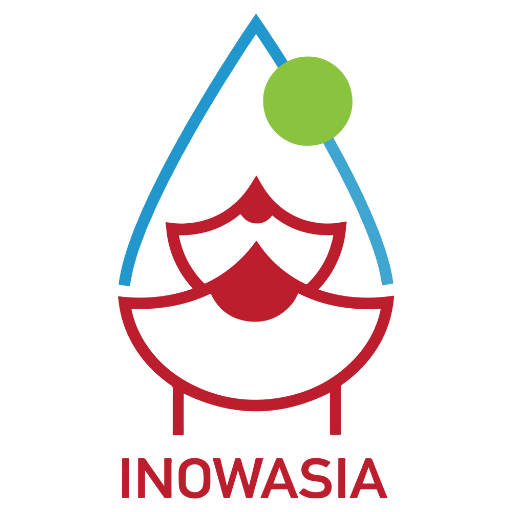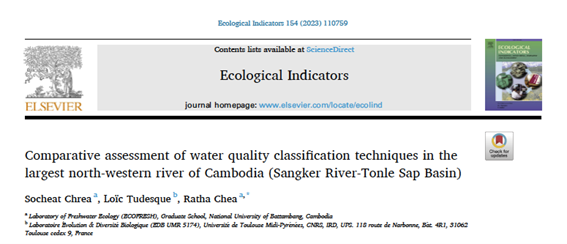

INOWASIA acknowledged for article published in Ecological Indicators Journal
This summer 2023, Socheat Chrea and Ratha Chea from INOWASIA team in Battambang Univsersity have published with Dr Loic Tudesque (from UT3) a paper on water quality assessment, physico-chemistry, environmental monitoring and ecosystem health of the Sangker River in the Tonle Sap Basin.

Chrea et al., 2023. Comparative assessment of water quality classification techniques in the largest north-western river of Cambodia (Sangker River-Tonle Sap Basin). Ecological Indicators, 154. https://doi.org/10.1016/j.ecolind.2023.110759
The lack of adequate and good water quality is one of the serious issues that most developing countries are facing, yet environmental monitoring programs are not efficiently protecting ecosystem health.
In this paper, the authors aimed to assess the suitability of different water quality assessment frameworks in order to define the most suitable method, especially for data-scarce environments, to quantify river ecosystem health.
The study was conducted in the largest north-western river of Cambodia, the Sangker River in the Tonle Sap Lake (TSL) basin (UNESCO Biosphere Reserve). Five water quality assessment methods were selected for the study: Basic & Single Prati indices, Mekong River Commission water quality index (MRC-WQI), French water quality assessment system (SEQ-EAU) and US Environmental Protection Agency (US-EPA) framework. Overall, a physico-chemical gradient of water quality was observed along the river course. The river head was defined by high levels of dissolved oxygen (DO), low nutrients and chloride, while the middle course was marked by a gradual decrease of DO and increased concentration of nutrients up to the TSL floodplains. This degradation was explained by multiple impacts from human activities, e.g. domestic wastes, livestock, crop farming, causing simultaneous eutrophication and oxygen depletion along the river course. Despite those multiple pressures, the Sangker river health status was scored as fairly good reflecting the current situation of the river.
So far, a convergence of the five water quality assessment methods has been proved. However, SEQ-EAU and Basic Prati seemed to be less suitable for tropical river health assessment. The study defined the US-EPA assessment method as the most suitable technique to quantify the Sangker river health. This method could potentially be used to monitor river ecosystem health in data-scarce environments. This would help overcome environmental monitoring challenges in developing countries faced by rapid global environmental changes.
INOWASIA is an Erasmus + Capacity Building Higher Education project that promotes a joint action of 11 organisations across 5 countries (Cambodia, Laos, Vietnam, France and Spain) to train a new generation of water professionals in Southeast Asia. More info
This project has been funded with support from the European Commission. This publication reflects the views only of the author, and the Commission cannot be held responsible for any use which may be made of the information contained therein.
Project Number: 619225-EPP-1-2020-1-ES-EPPKA2-CBHE-JP
Let's Talk!
All Rights Reserved by INOWASIA 2021

